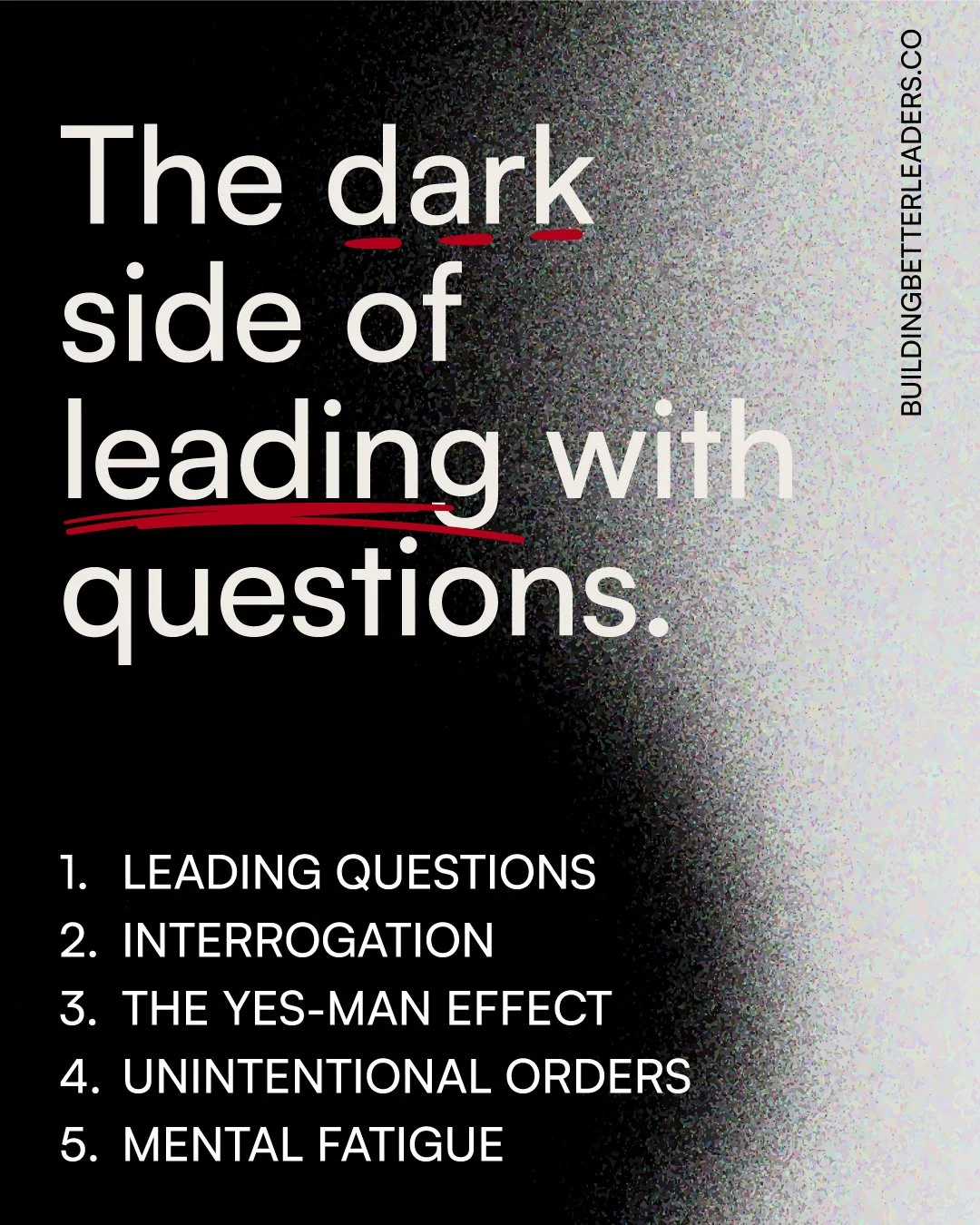The dark side of leading with questions
We’ve all heard it before: “Great leaders don’t just give answers; they ask better questions.” But what happens when questioning goes wrong?
Here’s the cautionary tale of leading with questions. As an organizational leader, I’ve fallen into at least one of these traps, so much so that I even developed a system to prevent #4 from happening. Let’s go through each one:
Leading Questions - Steering the Conversation
If you're fishing for a specific answer, you're not really asking. Instead of exploring different perspectives, you subtly push for the response you want.
❌ “Wouldn't you agree that this approach is the best option?”
✅ Better: “What are the pros and cons of this approach?”Interrogation - When Questions Feel Like Attacks
Too many rapid-fire questions can make people feel attacked rather than heard. If your questions feel like cross-examinations, expect defensiveness, not openness.
❌ “Why didn’t you follow the process?”
✅ Better: “Can you walk me through your thought process?”The Yes-Man Effect - When Individuals Just Agree to Please You
People want to please their leader. If they sense what you want to hear, they may just agree rather than share their true thoughts.
❌ “Do you agree this is the best solution?”
✅ Better: “I’m genuinely curious. How do you feel about this approach?”Unintentional Orders – When Questions Sound Like Commands
Sometimes, a well-intended question can come across sounding like a command.
❌ “Have you considered doing X?” might sound like “Go do X.”
✅ Better: “What options have you explored so far?”
(Knowing my questions carry weight, I usually preface them with: “This is not an order.”)Mental Fatigue – When Too Many Questions Overwhelm
Asking too many deep questions without direction can frustrate rather than engage.
❌ “Why did this happen?” → “What led to it?” → “What does it mean?” → “What should we do?”
✅ Better: “What do you think is the key issue here?”
At the heart of it all, questions should serve others, not yourself. Build psychological safety first, then ask with genuine curiosity, not hidden agendas. When done right, questions unlock insight. When done wrong, they shut people down.
Are you mindful with how you lead with questions?

